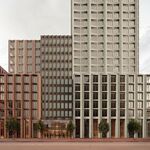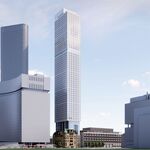NU houses have extremely small backyards, so I'd think a fair number of people already living in generic suburbia who want more room (and lots of people want to garden, or a place for kids/dogs to play, or just 'space' between them and their neighbours) might look to more traditional subdivisions for this reason alone. What kind of people would respond better to the advertising/branding of a place like Cornell? I don't think it's been marketed as 'value' or for the houses themselves (like the 'luxury bungalows in a ravine setting' shtick used to sell half of Pickering), but if they have marketed it as walkable or 'a nice community' or something like that, I'm sure people will perceive these qualities to be true even if they aren't, if only because people are going to be optimistic and forthcoming with praise about things they've purchased if they've gone out of their way to buy something unique.
Little things can help in NU places, like the locations of schools and convenience retail, to increase walking and cut down on driving, and sidewalks and parkettes and so on would encourage strolling and interaction, but it's hard to separate neighbourhood design from the natural behaviour of the people living there...if a neighbourhood was built with NU qualities passively embedded into the design, and not hyped up as a different/better kind of community, what sorts of people would live there and would the same slightly better scores on these metrics be attained? If the traditional suburban sites had 10% more people living there who sought an 'urban community,' would they attain a better score on these metrics or would their urban ambitions be crushed by McMansions and a lack of sidewalks? Of course, this what-if scenario requires an unbranded NU community, and a differently branded traditional subdivision, which means no real examples may ever exist to compare.
The study shows NU places exhibit more neighbourly chatting but anyone who's ever lived in a new development knows that chatting with strangers and known neighbours is frequent in the first few years, even when there's significant age/language/whatever barriers. Yet this chatting dies off quickly when there's no more gossip about the development to share, like construction issues, and what upgrades did you get, and when are they going to build the school, and did you hear about the stores going into that plaza, and also (especially?) when residents and demographics begin changing. The two Calgary NU places are newer than the traditional suburbs, while the age of the traditional Montreal area isn't listed. Cornell is listed as older than Woodbine North but Cornell is a massive community that is still mostly unfinished. The newness of the NU sites could easily account for a few percentage points of increased socialization.




